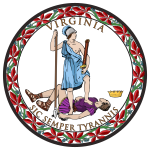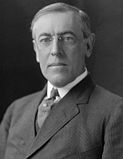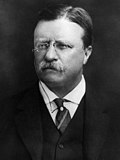| |||||||||||||||||||||||||||||||||
| |||||||||||||||||||||||||||||||||
 County Results
| |||||||||||||||||||||||||||||||||
| |||||||||||||||||||||||||||||||||
The 1912 United States presidential election in Virginia took place on November 5, 1912. Voters chose 12 representatives, or electors to the Electoral College, who voted for president and vice president.
The 1900s had seen Virginia, like all former Confederate States, almost completely disenfranchise its black and poor white populations through the use of a cumulative poll tax and literacy tests.[1] So severe was the disenfranchising effect of the new 1902 Constitution that the electorate for the 1904 presidential election was halved compared to that of previous elections, and it has been calculated that a third of those who voted were state employees and officeholders.[1] The limited electorate meant Virginian politics was controlled by political machines — firstly one led by Thomas Staples Martin and after he died the Byrd Organization.
However, unlike the Deep South, historical fusion with the “Readjuster” Democrats,[2] defection of substantial proportions of the Northeast-aligned white electorate of the Shenandoah Valley and Southwest Virginia over free silver,[3] and an early move towards a “lily white” Jim Crow party[2] meant that in general elections the Republicans retained around one-third of the small statewide electorate,[4] with the majority of GOP support located in the western part of the state.
With the already minority state Republican Party divided between conservative incumbent President William Howard Taft and Progressive nominee, former President Theodore Roosevelt, it was clear that the gains Taft had long hoped for in the South would not be made at this election. Polls as early as July showed Virginia as completely safe for Democratic nominee and New Jersey Governor Wilson.[5] By October it was widely believed that only a few dissident officeholders were behind the Progressive Party.[6]
Ultimately Wilson won Virginia by 48.96 percentage points over Taft, with Roosevelt a close third. Wilson carried all but two counties, and won the largest popular-vote victory in Virginia since Andrew Jackson in 1832 — although Franklin D. Roosevelt would three times exceed his popular vote percentage. Wilson ultimately won the national election with 41.84 percent of the vote. As of the 2020 presidential election[update], this is the last election in which Floyd County did not vote for the Republican candidate.[7]
| Elections in Virginia |
|---|
 |
- ^ a b Kousser, J. Morgan. The Shaping of Southern Politics: Suffrage Restriction and the Establishment of the One-Party South, 1880-1910. Yale University Press. pp. 178–181. ISBN 0-300-01696-4.
- ^ a b Heersink, Boris; Jenkins, Jeffrey A. Republican Party Politics and the American South, 1865-1968. pp. 217–221. ISBN 1107158435.
- ^ Moger, Allen. "The Rift in Virginia Democracy in 1896". The Journal of Southern History. 4 (3): 295–317.
- ^ Phillips, Kevin P.; The Emerging Republican Majority, pp. 210, 242 ISBN 978-0-691-16324-6
- ^ "Out Here in Kansas". The Salina Evening Journal. Salina, Kansas. July 20, 1912. p. 4.
- ^ "Editorial Snapshots". Shenandoah Herald. Woodstock, Virginia. October 4, 1912. p. 2.
- ^ Menendez, Albert J. (2005). The Geography of Presidential Elections in the United States, 1868-2004. pp. 326–330. ISBN 0786422173.
© MMXXIII Rich X Search. We shall prevail. All rights reserved. Rich X Search



